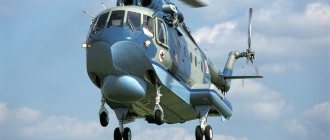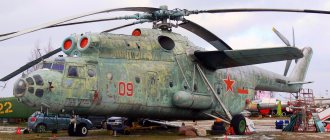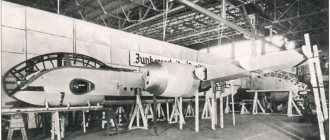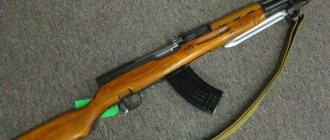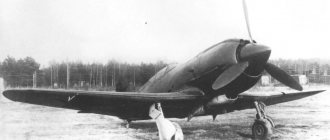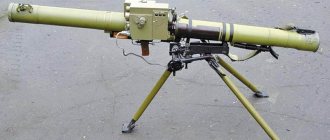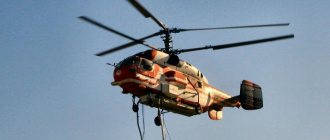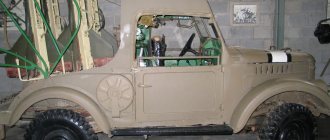For the creation of the Il-28 aircraft, the design bureau group was awarded the Stalin Prize, which was one of the highest forms of rewarding citizens for outstanding achievements. The vehicle itself has proven itself to be a reliable friend and partner in combat conditions. Telegram channel “Wings of War” talks about this outstanding development of the Design Bureau named after. Ilyushin.
Il-20 and Il-24N reconnaissance aircraft
The Il-18 turboprop passenger aircraft became one of the most popular Soviet airliners of the 60s...70s.
last century. In 1957...1969 Moscow Aviation, MAPO, and now the Production Center named after. P. A. Voronina, part of RSK MiG) produced 564 of these aircraft, which for many years were widely used to transport passengers on airlines in the Soviet Union and many foreign countries. For example, in 1965, 435 Il-18 airliners of various modifications were in operation, 81 of which were flown abroad. In 1968, the number of Il-18s in service reached 511, and those exported reached 103. The Il-18 was a symbol of efficiency and reliability; it was not without reason that this type of aircraft was chosen as the official “government” vehicle that transported the highest officials of the state - Nikita Khrushchev , and then Leonid Brezhnev, other members of the government during working trips around the country and state visits abroad. Passenger Il-18s mostly disappeared from the airways in the 1980s, giving way to more modern Tu-154s, but they can still be found at airports around the world. Until recently, several dozen Il-18s continued to fly on several Russian airlines. Thus, according to official data from the State Civil Aviation Service of Russia (now the Federal Air Transport Agency), by 2003 there were 19 Il-18s in the registry of aircraft of the Russian Federation (a year earlier - 27 aircraft). True, in 2004, the FAVT of the Russian Federation already put a dash in the “IL-18” column. But such aircraft still continue to fly in a number of Russian non-profit organizations and abroad.
Since the late 50s. The IL-18 has become a kind of “calling card” of our civil aviation, presenting it not only at airports around the world, but also at international air shows. At the same time, few people knew that a number of modified Il-18s were “registered” at military airfields. We are talking about a number of special modifications of this airliner, created in the interests of the military. These cars, which outwardly differed little from ordinary passenger Il-18s (and often bore the same inscription on board), remained for a long time one of the most secret Soviet aircraft. Information about them was protected even more carefully than, for example, information about other new combat aircraft - fighters and bombers. Such vehicles, known under the names Il-20 and Il-22 and intended for electronic reconnaissance, transmission of telemetric information, use as repeaters and air command posts, were produced after the production of passenger Il-18s was discontinued. Their service continues to this day, although many military versions of the Il-18 have already ceased to be used for their original purpose, and after the dismantling of special equipment they are used mainly as transport ones. Today the time has come when it is already possible to reveal some details about these once “secret” modifications of the popular airliner.
Tasks
During exercises or when preparing for aggression, the armed forces of any state especially need the coherence that signal troops provide. Ideally, the neighboring party wants to know the entire volume of transmitted information, but the intensity of radio exchange can also be used to understand a lot. In the cabin of the Il-20M there is a high-class military linguist-translator who constantly listens to open communication channels. He speaks the language of the neighboring state perfectly, knows the dialects and jargon used by the military personnel of the potential enemy’s army. Oddly enough, a very large part of useful information is obtained in this simple way. The chatterbox is not only our godsend for a spy.
But the IL-20M (reconnaissance aircraft) can not only eavesdrop, but also spy. Photos taken by the high-quality A-87P camera will help you draw conclusions about military activity many kilometers away, and you don’t need to cross the state border to do this. And, of course, it won’t hurt to take direction finding from foreign radars either.
Ice Scout
Some ideas developed on the IL-20 have found application in the interests of the national economy. Back in 1965, the Polar Aviation Directorate of the USSR Ministry of Civil Aviation ordered that the Il-18 aircraft be equipped with special radar equipment that could be used for ice reconnaissance when guiding convoys of ships along the Northern Sea Route. In Leningrad VNIIRE, under the leadership of chief designer V.M. Glushkov, the Toros radar equipment for remote sensing of ice cover was developed and in 1967 passed state tests on the An-24LR aircraft. However, it did not come to the point of installing it on the IL-18. The idea of using a modified Il-18 as an ice reconnaissance aircraft was only returned to in the late 70s.
On June 12, 1979, the Soviet government issued a decree on the creation of a specialized Il-24N aircraft based on the Il-18D with the Nit-K instrumental ice reconnaissance radar equipment. The system was developed by the same VNIIRE NPO Leninets (work manager V.M. Glushkov, chief designer of the radar S.E. Kontorov). They decided to place the “Thread” in the ventral gondola - exactly the same as on the Il-20 reconnaissance aircraft with the Igla radar. Information from the Nit-K radar station was displayed on special indicators at the workplaces of six operators in the passenger cabin of the aircraft. In addition to the Nit-K radar, the Il-24N was equipped with the modern Malva-4 navigation complex and the Iris complex equipment with short- and long-range navigation radars controlled by digital on-board computers. The latest navigation equipment provided automated navigation of the Il-24N in the Arctic.
Like the Il-24N in the early 80s. two serial Il-18D passenger aircraft were converted (No. 10004 and 10403, registration numbers USSR-75449 and USSR-75466). One of them, in particular, provided support for the nuclear icebreaker Siberia during the evacuation of the drifting station North Pole-27 in May 1987. Experienced crews of GosNIIGA test pilots have flown extensively on Il-24N aircraft. However, the Il-24N aircraft were never widely used in polar aviation. The change in the economic situation in the country led to the fact that the capabilities of aerial ice reconnaissance aircraft were never fully utilized.
Il-20M reconnaissance aircraft
Incidents[edit | edit code]
On December 2, 1981, while landing at the Domna airfield (Chita region), an Il-22, registration number USSR-75907, belonging to the 105th separate mixed aviation squadron of the Strategic Missile Forces, Omsk, crashed.[14]. A transport flight was carried out along the route: Novosibirsk (Tolmachevo) - Domna. The transport of personnel was carried out; on board there were officers of the All-Russian Communist Party of the Missile Army and a commission for acceptance into the formation of military unit 08312. Due to the incorrectly set pressure of the landing airfield on the altimeters, the error was about 500 meters. The plane collided with Titovskaya Sopka, collapsed and burned. 31 people died (out of 32 that were on board): Deputy Army Commander Major General Korsun, Deputy Division Commander Colonel Serebryansky A.L., Head of the Division Personnel Department Lieutenant Colonel Golubenko G.V., Senior Assistant Chief of OMUiK Major V. Dmitrenko P., Captain Yu. B. Shcherbinin, Head of the neurological department of the hospital, Lieutenant Colonel m/s Karavaev A. V., Lieutenant Colonel Korukhov V. I. and the entire crew of the aircraft 5 people. One of the senior officers survived: during the collision of the side with the ground, the detached tail section of the aircraft covered him from above.
On September 17, 2020, an Il-20 was shot down while landing at the Khmeimim base in Syria. Communication with the aircraft was lost at 23:00 Moscow time, when the plane was 35 kilometers from the sea coast[15]. The Russian Ministry of Defense reported that the plane was shot down by mistake by a Syrian S-200 complex while repelling an Israeli air raid in the province of Latakia. All 15 Russian servicemen on board were killed[16][17][18].
Repeaters and air command posts
From afar, it was not difficult to mistake other special versions of the aircraft for ordinary passenger Il-18s, especially since they flew, as a rule, in the usual Aeroflot livery, with Aeroflot registration numbers and even with the inscription “IL-18” in its usual place on the board. The true, by no means “non-civilian” essence of these aircraft was revealed only by the numerous antennas of various kinds of radio engineering devices with which these “mobilized” airliners literally bristled. We are talking about Il-18RT, Il-18SIP and Il-20RT radio communication and telemetric information repeater aircraft, as well as Il-22 and Il-22M11 air command posts.
"BOING RC-135V/W RIVET JOINT" - a unique radar reconnaissance aircraft
Electronic reconnaissance aircraft (USA)
The RC-135V/W’s “cheeks” (radomes) contain electronic radar systems
Currently in the USA, the RC-135V/W is considered the main means of detecting various sources of radio emission. It is one member of a family of reconnaissance aircraft collectively known as the RC-135. It was created in 1973 from the RC-135C photo and electronic reconnaissance vehicle. It differed from its predecessor in its special elongated nose, filled with reconnaissance equipment, as well as many different antennas on the wing and under the bottom.
The scout was given the name “Rivet Joint”, which means “rivet joint”. The crew was the largest in the history of reconnaissance aviation: 3 electronic warfare operators; from 12 to 16 people conducting observation of the enemy; 7 technical operators performing radio-electronic emissions analysis; a specialist compiling maps of radio-electronic emissions, with 2 assistants; 2 operators responsible for detecting non-standard or unidentified signals. In addition, there was an operator to transmit data to other aircraft and 2 people involved in maintenance.
The scallops on the top of the fuselage are radio navigation and radio communication antennas
Six Rivet Joints took part in Operation Desert Storm. Currently, the US Air Force has 14 vehicles of the “V/W” modification; 2 “U” modification aircraft with completely secret equipment; 2 modifications “S”, collecting information about ongoing tests of ballistic missiles. All of them are equipped with the latest American intelligence technology.
The pylons with rods mounted on the top of the wings are antennas for the high-frequency communications system
The RC-135V/W's nose cone houses a powerful radar
Past and present of military transport aviation
As mentioned above, a series of local military conflicts, and then the Second World War, somewhat slowed down the emergence of military transport aviation. Only by the end of the forties did the leading aviation powers begin to develop projects for specialized cargo winged vehicles.
In the USA, before 1954, the C-119 Flying Boxcar, C-47 Skytrain, and C-46 Commando transport aircraft were already produced. But after the Korean War, where the main transport load fell on the only Convair XC-99 with a carrying capacity of 45 tons, it became obvious that it was obsolete. A full-fledged truck was needed to transport airborne brigades and light assault armored vehicles to the site of conflicts.
This aircraft was the Lockheed C-130 Hercules. Since 1954, vehicles of this brand have taken part in 22 US military operations around the world. Since 1993, the American Air Force has included a more heavy-duty modification - the C130-J30 Super Hercules.
Following the S-130, the specialized military transport aircraft An-12 was put into service with the USSR Air Force. It had the same payload capacity as the S-130, but was significantly inferior to the “American” in terms of useful volume (90 m3 versus 124 m3). The new aircraft is the unification of design documentation for the An-10. Over fifteen years, more than 1.5 thousand An-12 units were produced.
Tests
It was decided to convert the serial Il-18D No. 9403 into the first copy of the Il-20. Its re-equipment at Moscow began on May 6, 1967 and was completed early next year. The aircraft entered flight testing in March. The first flight on the Il-20 was carried out on March 21, 1968 by the crew led by test pilot Stanislav Bliznyuk, who came to the company after graduating from the LII Test Pilot School in 1965 and later became chief pilot of the OKB. S. V. Ilyushina. V. Volodko was appointed lead engineer for testing the Il-20.
The first stage of flight testing (still without the Igla equipment), completed in the same 1968, revealed that the IL-20 differs only slightly from the serial IL-18D in terms of piloting. Its control was easy and convenient, however, the presence of a ventral gondola with a large lateral surface caused a decrease in the margin of directional static stability. However, this mainly manifested itself only when flying with the outermost engine feathered, when the aircraft's heading and roll deviation occurred more intensely than on the passenger Il-18D. But even in this case, the roll values did not exceed the limits.
The second stage of flight testing (with the Igla equipment) began in the same 1968 and ended in the summer of the following 1969 with a positive assessment. The flights were counted as stage “A” of joint state tests, and the aircraft was recommended for mass production. The development of drawings for mass production did not begin back in 1968, and at the turn of the new decade the first production machines began to leave the workshops. Stage “B” of joint state tests of the Il-20 took place in 1970...1971, after which it began to enter service with the troops.
“IL-2 is needed like air”
A telegram with such content was sent by the Commander-in-Chief of the USSR to the leadership. The front was in dire need of military equipment, including aviation. The plant responded with obligations that it fulfilled, despite the difficulties of wartime: evacuation, shortage of materials and labor, lack of instructions for training flight crews.
Serial production of the aircraft began even before the start of the war at the Voronezh aircraft plant, which was located deep in the rear at the start of the war. However, as a result of the rapid advance of the enemy, the plant found itself within the reach of enemy aircraft and was repeatedly bombed. Like many enterprises, it was subject to evacuation to the east. During the period of evacuation and the deployment of production in a new location, the production of cars was suspended. And although it took just over a month, the shortage of aircraft, as well as other equipment, had a very acute impact on the front.
In the first months of the war, a difficult situation developed. Il-2 aircraft suffered heavy losses. This was partly due to the poor training of the flight crew. The plane was a new product; there was no time to master it. In addition, the absence of a gunner in the rear of the aircraft and fighter cover made the attack aircraft defenseless against attacking enemy fighters. Tactics for using aircraft in combat were not developed.
Due to their low speed and low ceiling, the aircraft became easy targets for enemy artillery
Aircraft production, focused primarily on the number of aircraft produced, was of no small importance - all this together became the reasons for large losses of aircraft
Armament
According to the requirements set out in the resolution of the Council of Ministers, the Il-20 aircraft had to have powerful weapons - to destroy enemy targets (offensive) and for its own defense (defensive). Due to this, it was classified as a heavy attack aircraft. Both types of attack aircraft weapons were provided in two versions. The first option for offensive weapons included:
- 2 23-mm cannons located in the wings - for firing at targets ahead in horizontal flight or in dive mode;
- 2 23-mm cannons placed at the bottom of the hull at an angle - for firing at ground targets in low-level flight;
- bombs no more than 400 kg with a standard bomb load, placed inside the center section.
- 2 bombs of 500 kg each placed on external holders;
- 4 RS-132 shells or 8 PC-82 shells;
- 10 special Ag-2 air grenades located at the bottom of the fuselage, designed to protect the rear hemisphere from below.
Option 2 provided for the use of:
- 1 45 mm caliber gun;
- 2 23 mm caliber guns;
- 6 RS-132 shells;
- The bomb load did not change.
In the 1st version, a 23-mm Sh-3 movable cannon with a supply of 200 live rounds, placed in the upper defensive installation Il-VU-11, developed by the Ilyushin Design Bureau specifically for this project, was used for defense. Another option was to replace the upper installation of the Il-Vu-11 with the Il-KU-8 cannon installation, located in the rear (aft) part of the aircraft fuselage.
Reasons for termination
So, due to non-compliance with the requirements of the government decree, the project of the Il-20 attack aircraft of an unusual design was rejected. The flight performance characteristics of the new aircraft turned out to be unsatisfactory. Also, the customer was not satisfied with the quantity and power of offensive weapons. The firepower of the Il-20 was less compared to the Il-10. It was impossible to fire simultaneously from all the guns on board. Fire was fired alternately from two cannons - either from those located in the wings or from the fuselage. The standard bomb load was only 300 kg.
The high location of the pilot's cabin led to an increase in the lateral surface of the fuselage and midsection, as a result, to an increase in take-off weight. As a result, the aerodynamic properties of the machine deteriorated, and the likelihood of the aircraft being hit by enemy fire increased. Engine maintenance has become more difficult due to difficult access to it and its components. Any repair work on the engine required its removal from the car. The pilot could only get into the cockpit with the engine turned off. And in a situation of emergency leaving the cabin, there was a threat of collision with the propellers of a running engine.
Despite the negative attitude of specialists towards the variant of the attack aircraft with an unusual design layout proposed by S.V. Ilyushin, the design bureau made another attempt to create an aircraft with a similar design. This time, a project was proposed for a 2-seater BSh Sh-218 with an M-251 engine designed by S.M. Alekseev. But its performance characteristics also turned out to be unsatisfactory. Below is a photo of the Il-20 M at the Kubinka airfield.
Unbiased statistics
made up almost a third of the total number of combat vehicles that fought. By mid-1943, one thousand Il-2 aircraft were sent to the front every month. In total, 34,943 Il-2 attack aircraft and 1,211 Il-2U vehicles were produced during the war. Combat losses of aircraft in the Army Air Force amounted to 10,759 aircraft and 807 aircraft in the Navy Air Force.
The combat losses of attack pilots amounted to 7,837 people, which is 28.4% of the total combat losses of Army Air Force pilots. Of these, 41% were among command personnel. By the end of the war on May 10, 1945, 3,075 Il-2 and Il-2U units remained in service with the Army Air Forces on all fronts, as well as 197 Il-2 units and 12 Il-10 units in the Navy Air Force.
IL-40 equipment
Modern equipment was installed on board the Il-40, which made it possible to effectively use the aircraft day and night, in various weather conditions. The wing tips, fin and stabilizer, and engine air intakes were equipped with air-thermal deicers, hot air to which came from the engine compressors. The windshield of the pilot's cockpit was electrically heated.
The aircraft's flight-navigation and radio communications equipment is represented by the NI-50I navigation indicator, AGI-1 attitude indicator, GPI-48 gyro-semi-compass, ARK-5 automatic radio compass and LGMK-3M compass, RSIU-3M command radio station and RSB-5 communications unit, SPU intercom -5, radio altimeter RV-2, marker radio receiver MRP-48P, state identification transponder “Barium”, aerial cameras NAFA and AFA.
During cannon fire, bombing and firing rockets, the pilot used the PBP-6 collimator sight, which did not fail at high altitudes and dives. The bombs were dropped automatically thanks to the ESBR-3P electric bomb releaser. The stern installation was equipped with an SPB-40 sight. There was equipment on the plane that made it possible to record the results of the bombing at any time of the day.
During the development of the IL-40, it was subsequently planned to create several modifications on its basis.
A-50 "SHMEL" - Russian radar shield
Aircraft long-range radar detected and controlled (USSR)
The shape and location of the huge “mushroom” were chosen very well, so piloting the A-50 is no more difficult than the Il-76
In the early 1970s, the latest anti-aircraft missile systems were already forcing fighters and bombers to descend lower and lower in an attempt to deceive the all-seeing eye of the radar.
In 1969, the USSR was armed with the Tu-126 radar patrol and guidance aircraft, which was inferior in characteristics to the similar American E-3A aircraft. The Soviet vehicle could not track the enemy at low altitudes.
The government adopted a resolution to create an aircraft capable of detecting subtle targets literally above the ground. The design of such a machine was carried out by the Moscow Research Institute of Instrument Engineering.
Initially, they planned to take a passenger aircraft as a basis, but for reasons of cost and convenience of subsequent maintenance, the aircraft in flight units settled on the military transport Il-76, designed at the S.V. Ilyushin Design Bureau.
In 1973, work on creating a new machine was transferred to the A.K. Konstantinov Design Bureau. The plane, so far without its main part - the latest radio-technical complex called "Bumblebee", took off on December 19, 1978. Tests of the aircraft at this time took place on the ground.
"Bumblebee" - "eyes and ears" of Russian air defense systems
The complex was able to detect fighters in the air and calculate their coordinates both at low and high altitudes, at a maximum distance of 600 km, search for ships and boats at sea at a distance of up to 400 km, see and track up to 60 targets simultaneously and transmit signals about them 12 fighters at once. “Bumblebee” could “blind” the enemy, covering his radar system with interference, and confuse him with false targets.
In 1984, construction of the aircraft began at the Tashkent Aviation Plant. A year later, the vehicles began to arrive in military units. NATO gave this aircraft the nickname Mainstay - “stronghold”.
For the first time, potential adversaries saw it only in December 1987 over the neutral waters of the Barents Sea, when the vehicle was spotted from a Norwegian Lockheed R-3B anti-submarine aircraft.
In 1991, during Operation Desert Storm, two A-50s, flying over the waters of the Black Sea, observed the Persian Gulf area and tracked the movements of NATO aircraft in it. In the same year, the planes had to hastily leave their settled base in the now sovereign Lithuania and move to the Russian airfield in the city of Pechory. In 1994, these vehicles constantly “hovered” over the territory of Chechnya and, covering it with a continuous radar field, did not allow the militants to establish contact with abroad.
The radome of the pulse-Doppler antenna of the all-round radar station has a diameter of 10.8 m
In 1988, the A-50 was demonstrated openly for the first time - at the airfield in Kubinka to the Indian military. In 1997, one aircraft was converted to install an Israeli radio-electronic system.
In 2000, one Bumblebee was leased to the Indian Air Force. In total, about 20 A-50s were produced. The vehicles are still in service with the Russian Air Force, remaining the only representatives of this class.
The future of transport aviation
Promising scientific developments make it possible to imagine what military aircraft of the future will be like, designed to transport cargo. The ambitious Russian projects Il-112 and Il-106 are set to replace Russia's most popular military aircraft, the An-22, An-26 and Il-76.
The heavy IL-106 is the basis for the development of a promising aviation complex for transport aviation (PAK TA). Its characteristics include a fairly large (up to 100 tons) load capacity. Futuristic in its design, the Ermak PTS (the second name of the project) looks like a picture from a science fiction film.
Design thought in the USA does not stand still either. In 2020, the world's largest aircraft, Stratolaunch, was rolled out at the Mojave Proving Ground. It is unusual in that it has two fuselages united by a central beam. The wingspan of the six-engine vehicle is 117 m, take-off weight is 590 tons.
However, the prospects for operation and the scope of application of a device of this design cause slight bewilderment. Suspension of a space system on the interwing space between the fuselages is a very dangerous undertaking.
Over the years, we have seen what is remarkable about military transport aircraft, these good-natured heavy-duty giants. Their takeoffs, landings, and flights are a breathtaking sight. Now, apparently, the time has come for big changes, the result of which should be the emergence of completely new types of transport aircraft.
History of creation
The history of the project began back in 1945, the country had not yet recovered from the Great Patriotic War, and engineering thought was already looking into the future, determining the future strategy of aircraft construction. Already in 1946, the first experimental machine developed at the S.V. Design Bureau. Ilyushin, rose into the air. It had a power plant of four piston engines designed by A.D. Shvetsov and was designed to transport 65 passengers over a distance of up to 3 thousand km. with a cruising speed of 450 km/h. It soon became clear that piston engines could not meet customer requirements and the IL-18 project was frozen indefinitely.
In 1956, development began on a turboprop version of the airliner for 75 passengers with a range of 3,000 km. It was assumed that with this number of passengers and 4 tons of cargo, the aircraft would fly at a speed of 600–650 km/h at an altitude of 8 thousand meters. The take-off distance of the aircraft should be no more than 650 meters, and the landing distance - 600 meters. The Ilyushin design bureau, having developed the piston version of the Il-18, quickly finalized the project for turboprop engines and on June 24, 1957, the prototype was tested in flight. Flight tests were successfully completed in 1959 and the aircraft was transferred to mass production.
After installing the Ai-20 turboprop engines designed by A.G. Ivchenko, Il-18 has become one of the most reliable and efficient aircraft. If one engine failed, the flight could be continued without losing altitude to the destination, but if two engines stopped, it was necessary to reduce the altitude and slightly reduce the flight range. All this made flights on the airliner safe and reliable.
IL-20, takeoff
On the basis of the Ilyushin passenger airliner, the Il-20 reconnaissance aircraft was developed in 1968. In March of the same year, test pilot A.G. Bliznyuk, together with the crew, took the aircraft into the air for the first time and tested the machine in flight. After flight tests began, in the fall of 1969 the Il-20 was put into operation and went into production.
Specifications
Reservation of the Su-25, which was strengthened on the Su-39
The technical characteristics of the Su-39 are based on four pre-production aircraft and the Su-25T modernization project. Accordingly, the flight and technical performance of the attack aircraft are presented based on the tests performed and the results obtained.
Dimensions, weight, length
In terms of size, the Su-39 has the following indicators:
- total length - 15.33 m;
- wingspan - 14.36 m;
- height - 5.2 m;
- wing area - 30.1 sq. m;
- sweep angle - 20°;
- chassis base - 3.58 m;
- chassis track - 2.5 m.
Flight data
The flight characteristics of the attack aircraft are represented by the following values:
- with a full combat load, the aircraft flies at a speed of 950 km/h;
- landing speed - 240 km/h;
- The runway length on the concrete and dirt runways is 550 and 600 m, respectively.
The permissible practical flight altitude is 10 thousand m. In combat use, the attack aircraft can gain altitude from 30 m to 7 km. The combat flight range at a permissible altitude is 900 km, and at the ground - 400 km. With an external fuel tank (PTB-800), these values increase to 1250 and 750 km, respectively. The ferry range with four additional tanks (2x1150 and 2x800 l) is 2500 km.
Air machine design
The most common material used on the aircraft was D16T duralumin (aluminum alloy). The fuselage, as usual, was assembled from stringers and frames. The cockpit is completely soundproofed and sealed. Straight, trapezoidal wing, monoblock, two-spar. It has an installation angle of three degrees with a transverse V of 38. The wing is profiled (SR-5S) with a thickness of 12%. Conventional flaps are installed. Ailerons are used as roll control. The stabilizer and fin are swept, and their NACA-00 profile is symmetrical. The aileron and rudder trimmer is controlled electrically, the RV trimmer is controlled mechanically (gear mechanisms and cable wiring).
The engines were installed in nacelles under the wings. They were controlled by cable wiring. Electric starters are used to spin up each engine. The total capacity of fuel tanks is 7908 l. They are made of soft rubber.
The chassis is tricycle, air-oil shock absorption. The alcohol-glycerin mixture Il-660 is used as a hydraulic fluid for shock absorbers. The main landing gear retracts forward into the engine nacelles, the front landing gear retracts back into the fuselage. The retraction and extension of the landing gear is controlled hydraulically.
The entire hydraulic system is used to operate the wheel brakes and drive the flaps. A hydraulic pump was installed on the left engine. The working fluid is MVP oil (45 l). The bomb bay flaps are opened using a pneumatic system. Unlike the hydraulic system, the air system is distributed by pumps to both engines.
The bomber's power sources are 2 GSR-9000 and 2 12-A-30 batteries. The radio equipment on the aircraft included the PSBN-N radar, RV-2 and RV-10 radio altimeter, ARK-5 radio compass, RSIU-ZM radio station, SPU-5 intercom device and SRO radar transponder.
The instrumentation includes a gyrocompass GPK-46, a compass KI-11, an artificial horizon AGK-47B, a navigation sight AB-52, a DGMK-3 gyromagnetic compass, a clock AChKHO and AVR-M, a rotary indicator UP-2, an altimeter VD-17 , numerical indicator MA-0.95, autopilot AP-5 and speed indicator KUS-1200.
On the modified Il-28 of the “reconnaissance” type, photographic equipment was installed: for perspective photography - AFA-75MK, AFA-33 and AFA-BA-40, for night photography - NAFA-31/25 and NAFA-31/50, photographic bomb FOTAB- 50-35/100-60, flare bomb SAB-100-55/1000-35. Information from the PSBN radar screen was recorded by the FRL-1M prefix. After some time, the PSBN radar was replaced by the Kurs radar. Additionally, the reconnaissance equipment included dipole reflectors of the ASO-28 type and “Sodium” jamming equipment.
"CANBERRA PR MK-9" - English "agent 007"
Long-range high-altitude reconnaissance aircraft (UK)
Canberra PR aircraft carried out aerial reconnaissance in many hot spots around the globe
The British jet bomber "Canberra", created by engineer E. Petter for, was in service in various countries around the world for almost 40 years. It was modernized, rearmed, discontinued and returned to service under a new guise.
In the early 1980s, 23 of these vehicles were equipped with new on-board radar equipment, an electronic anti-aircraft suppression system and large fuel tanks. To do this, it was necessary to increase the wing span, the length of the fuselage and install more powerful engines.
The bomber turned into a scout who managed to outlive his parent. The Canberra PR Mk-9 inherited its trapezoidal wing: the conservative British were never able to accept the fashionable swept wing.
The navigator's cabin is located in the bow and has only two small windows
The large wing area provided the vehicle with high lifting force and significant lifting speed. The aircraft is capable of flying at heights previously unattainable, for example for the American F-4 fighter. In those units where British intelligence officers had to serve together with the Phantoms, racing between them became a kind of sport.
These vehicles were part of the British Air Force until the mid-1980s. After the Falklands conflict, three of them were sold to Chile. Subsequently, five aircraft were equipped with the latest electronic equipment for high-altitude reconnaissance, data on which is still classified. The Canberras remain in service today.
The fin bears the insignia of 39 Squadron, the last to fly the Canberra PR Mk-9 in the RAF.
For ease of layout, the Canberra PR Mk-9 cockpit is offset relative to the longitudinal axis of the fuselage
Share link
